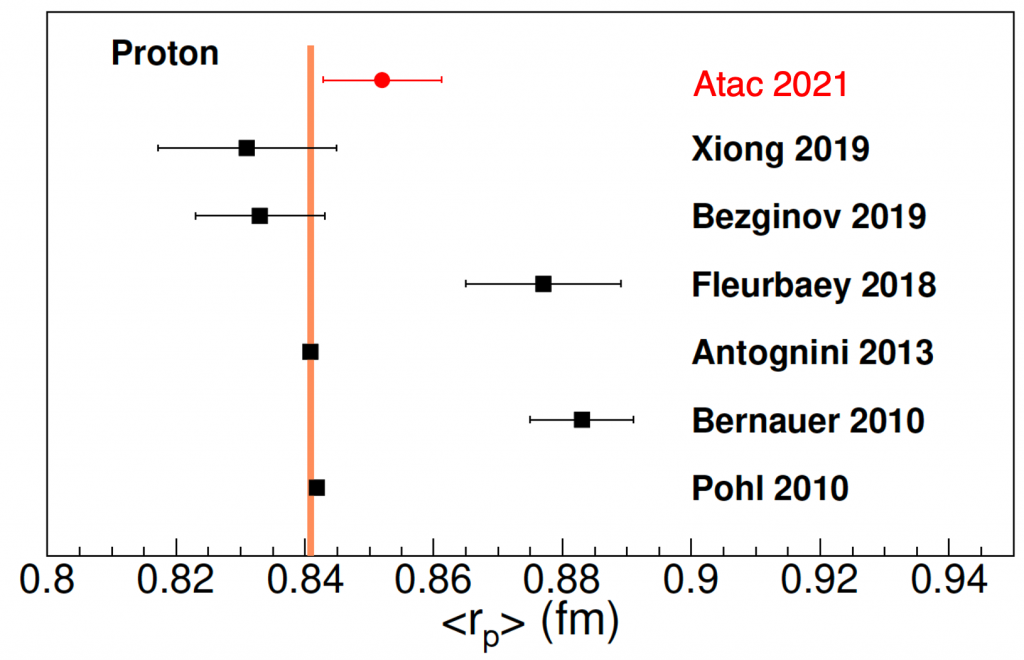The study of the proton charge radius (rp) has been historically instrumental towards the understanding of the nucleon structure. The disagreement of the rp as determined using different methods of extraction, namely through the measurement of the Lamb shift in the muonic hydrogen atom, startled the physics world and gave rise to the proton radius puzzle. This, in turn, led to a significant reassessment of the methods and analyses utilized in the radius extraction, as well as to the consideration of physics beyond the standard model, as potential solutions to this discrepancy. Recent tensions between the spectroscopic measurements conducted on hydrogen and between the electron scattering measurements have further complicated this puzzle.

Figure: The proton charge radius. Different methods of extraction give different result.
Our group is working on a unique experiment that will be the first to extract rp from a simultaneous measurement of μp and ep scattering, thus offering critical answers to the proton radius puzzle. The MUon proton Scattering Experiment (MUSE) at PSI will perform a simultaneous measurement of μp and ep scattering. The experiment will determine cross sections, two-photon effects, form factors, and radii independently for the two reactions, and will allow μp and ep results to be compared with reduced systematic uncertainties. The data will provide the best test of lepton universality in a scattering experiment to date, about an order of magnitude improvement over previous tests. Measuring scattering with both particle polarities will allow a test of two-photon exchange at the sub-percent level, about a factor of four improvement on uncertainties and over an order of magnitude more data points than previous low momentum transfer determinations, and similar to the current generation of higher momentum transfer electron experiments. The experiment has the potential to demonstrate whether the μp and ep interactions are consistent or different, and whether any difference results from novel physics or two-photon exchange. The uncertainties are such that if the discrepancy is real it should be confirmed with ~5σ significance, similar to that already established between the regular and muonic hydrogen Lamb shift.

Figure: The postdoc and graduate students of the Temple Nuclear Physics group, working on the construction of the MUSE Straw-Tube Tracker detector at PSI.
